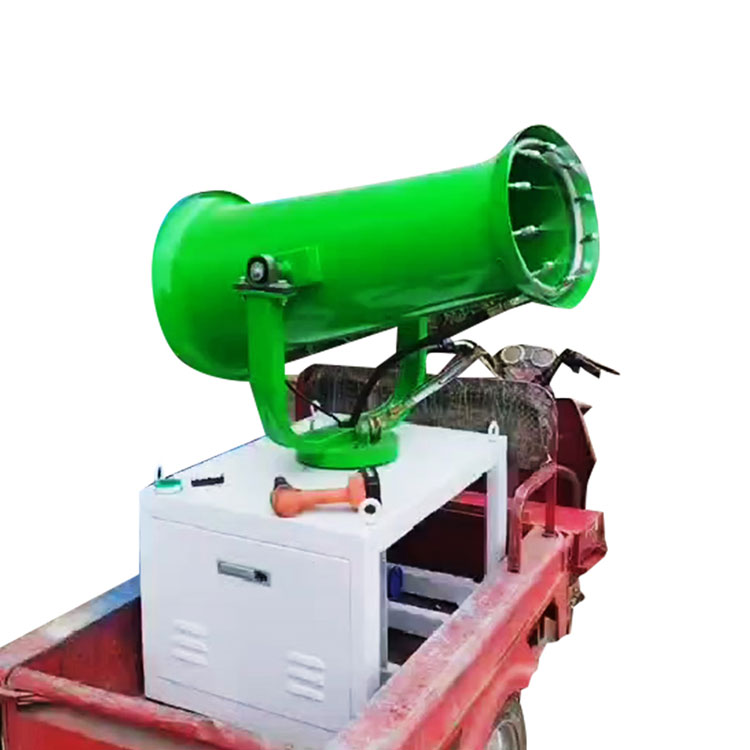What is the atomization process of fog cannon machine?
2023-10-12
The atomization process in a fog cannon machine is responsible for converting a liquid solution (typically water and a specialized fog fluid) into tiny droplets or fine mist that is expelled as a dense fog or smoke. This fog or smoke serves as a visual obstruction and is used in security systems to deter intruders. Here's an overview of the atomization process in a fog cannon machine:

1. Liquid Storage: Fog cannons have a reservoir or tank where the fog fluid is stored. This fluid typically consists of water mixed with a special glycol-based or glycerin-based solution.
2. Pump System: The machine includes a pump system, which pressurizes the fluid. This pressurization is essential for creating a fine mist.
3. Nozzle Assembly: The heart of the atomization process is the nozzle assembly. It consists of one or more nozzles that are designed to break up the pressurized liquid into tiny droplets. These nozzles can vary in design but are often based on principles like ultrasonic, pneumatic, or hydraulic atomization.
a. Ultrasonic Atomization: Some fog cannons use ultrasonic transducers to create high-frequency vibrations that break the liquid into droplets. These systems are efficient and produce a fine mist.
b. Pneumatic Atomization: In pneumatic atomization, compressed air is mixed with the liquid as it exits the nozzle, creating a mist of fine droplets.
c. Hydraulic Atomization: Hydraulic nozzles use the pressure of the liquid itself to force it through small orifices, breaking it up into droplets.
4. Adjustable Flow: Many fog cannons allow for the adjustment of the flow rate and droplet size by varying factors like the pressure, nozzle type, or fluid viscosity. This adjustability allows customization to suit the specific application.
5. Trigger Mechanism: Fog cannons are typically triggered by an alarm system or security breach. When triggered, the pump system activates, forcing the liquid through the nozzle assembly, where it atomizes into a dense fog or smoke.
6. Dispersion: The atomized fog is expelled into the protected area, creating a thick, opaque cloud of fog that rapidly reduces visibility.
7. Duration: Fog cannons typically operate for a limited duration (usually around 20-30 minutes) to allow time for security personnel or law enforcement to respond to the intrusion and for the fog to disperse once the threat is eliminated.
The atomization process is critical in fog cannons because it ensures that the fog produced is thick, long-lasting, and effective at obscuring vision. The specific technology and design of the nozzle assembly can vary between different manufacturers and models of fog cannon machines, but the goal is always to create a dense, non-toxic fog or smoke for security purposes.


